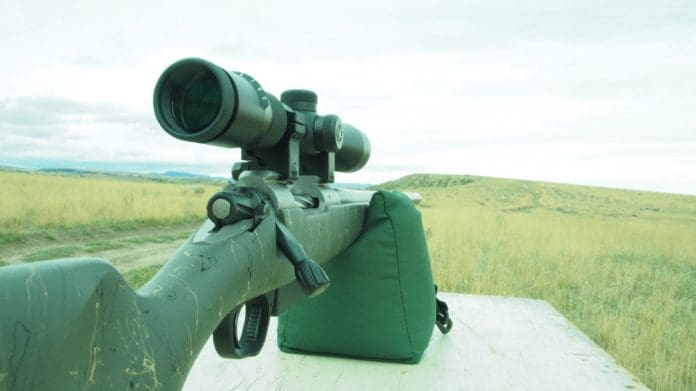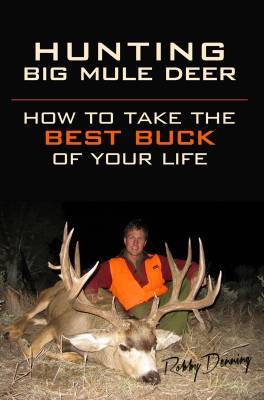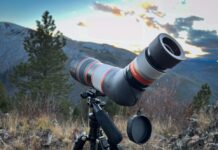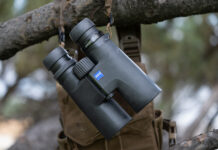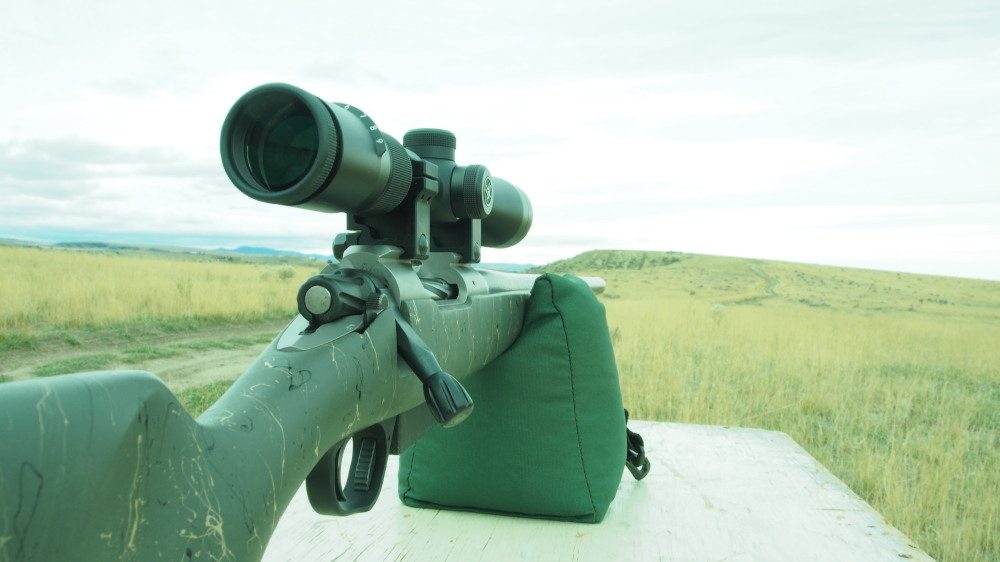
Hash Marks or Turrets? A Mule Deer Hunter’s Perspective
by Robby Denning, Rokslide Co-Owner
Before rangefinders came along in the late 90s, most mule deer hunters I knew were banking their long range shots on the power of the gun to produce a flat trajectory. For years, the 7mm Remington Magnum was near the top of the flat-trajectory heap. With a 150-160 grain bullet posting a ballistic coefficient over .500 and a sight-in of 3.25″ high at 100 yards, you could expect that bullet to drop about 24-26″ at 500 yards. That meant an on-body hold for big mule deer to about 450 yards. That math worked for decades but is also why so few big deer were killed beyond 450 yards; when you’re forced to aim at air, it’s just easier to miss.
Hunters recognized this limitation and pushed for hotter and faster calibers. The Weatherby 30.378, Lazzeroni Firebird, and the Ultra-magnums flattened trajectories even further, allowing an on-body hold for big mule deer beyond 500 yards. Guys were starting to tip bucks over way out there but at the cost of either ear-splitting muzzle brakes or mule-kicking recoil—and heavy cumbersome guns.
Then in the late 90s, something happened that would eventually change this need for speed: reliable laser rangefinders. At first they were only good to about 400 yards but within a few years, that distance was doubled and tripled. Some hunters came to realize they didn’t need to rely solely on flat trajectory to kill mule deer at extended ranges, they just needed to know where to hold.
Logically, the next step was to improve on already available scopes that offered multiple points of aim, either by adjustable turrets or hash marks (called subtensions by the engineers.) Fast forward to today and there are hundreds of great choices in these type of scopes and is at least partly why all the rage is long range hunting.

Based on these technological advancements and my experience from mule deer hunting and guiding over the decades, I think many of us can shoot less gun than we’ve been lead to believe that we need. By less gun, I mean less weight, bulk, and even ballistic performance. If you can wrap your head around this concept, you can enjoy accurate rifles that are a breeze to pack in the western mountains and still be deadly to practical yardages thought of as “long range” just 10 years ago.
Sufficient Energy
Most hunters will agree that 1,000 ft-lbs of energy is plenty to kill big mule deer (assuming a well-placed shot with a hunting bullet with good terminal performance). That energy level is found in guns as “small” as a .308 Winchester shooting to some pretty extreme yardages.
According to Vortex’s Long Range Ballistics Calculator, a 175-grain bullet fired at 2650 fps from a .308 Win. doesn’t fall below 1,000 ft-lbs until the bullet has traveled to about 700 yards.
Checking other calibers like the 25-06, 7mm-08, and 270 Winchester, (which nowadays are often thought of as as under-powered guns suitable only for teenagers,) these all deliver similar energy at similar yardages without punishing recoil or painful eardrums and usually in lighter guns. I’d even wager that most hunters can shoot these calibers more accurately than the giant magnums—I know this one can.
My Personal Experience
As an outfitter, I get to experience a wide range of rifles and calibers in real hunting conditions. They’re often as varied as the hunters who show up in camp. The last 10 years I’ve noticed that most hunters are showing up with bigger guns and bigger scopes. These guns are often in the 10-12 pound range and would leave Robert Ruark, who penned the phrase “Use Enough Gun”, wonder what what he was thinking.
However, put many of these guys in real hunting conditions—like hiking steep western terrain day after day and often needing to make quick shots—and they quickly figure out that there is a disadvantage to being over-gunned. Besides cumbersome weight, these guns are often topped with turret-style scopes that can eat up critical seconds a hunter may need to make a killing shot.
I’ve witnessed hunters who’ve missed opportunities at big bucks (and bulls) because it simply took too much time to get ready to shoot. In real hunting conditions, turrets, ballistic calculators, and phone apps are about the opposite of speed. When big mule deer are getting away, you have to be fast on the gun. Some hunters are, like this one The Fusion Buck, but most are not. I’m not saying there isn’t a place for those tools, but they take longer to use in the field than most hunters realize.
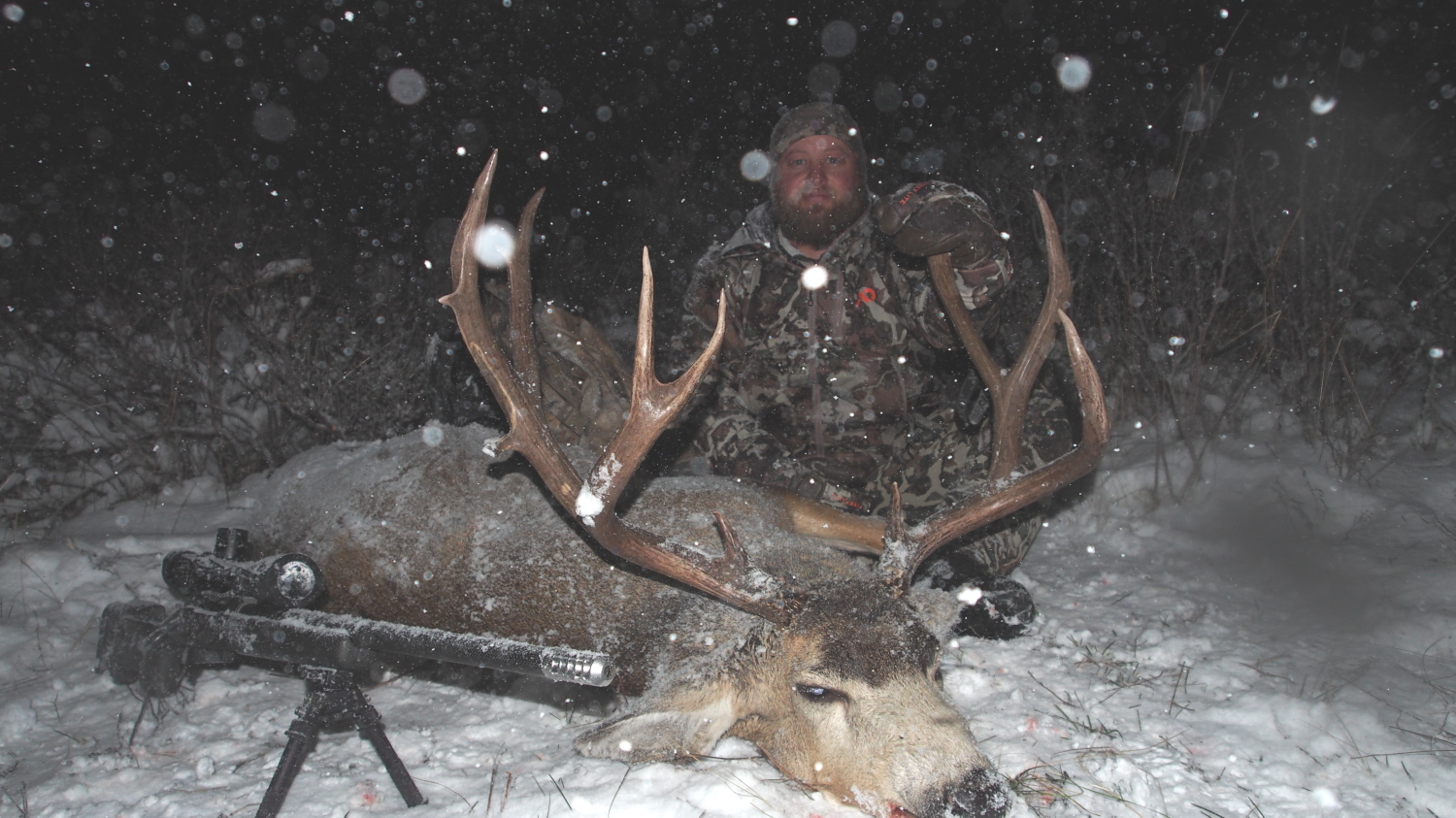
My Rokslide partner and friend Ryan Avery with an Idaho buck he killed at 120 yards with a turret-style scope. He was one of the few hunters I’ve guided who actually remembered to dial his scope down before the buck showed up. It was a good thing as this buck only gave him a few seconds to make the shot
There is also the very real possibility of cut noses and smashed eyebrows (including my own) that are too often the result of shooting un-braked big magnum rifles in stressful hunting conditions, (I prefer un-braked rifles). None of us worry about this possibility too much, until it happens. Then we’re scared of the gun and no one will convince me that will make any of us a better marksman.
While I’d rather guide a hunter who can actually handle a big gun, for me personally, I’ll choose a lighter and even lesser powered rifle for my deer hunting. They are easier to carry, thoughtless to point, and can save you critical seconds when it counts. Based on this, I myself stepped down from the 7mm Remington Magnum last fall to the 270 WSM in a Christensen Arms Summit Carbon (see Goodbye 7mm Rem. Mag, Hello 270 WSM).
This caliber and rifle allows me to shoot a lighter framed rifle and still have “Enough Gun” to kill mule deer at all reasonable yardages (more on that below.)
Hash Marks For Me
When choosing a scope, you can go with either a turret-style or a hash mark. After watching my clients over the years, I decided a scope with hash marks will most often work best for mule deer hunters. Scopes with hash marks are lighter on average than those with turrets and as long as you spend a few days at the range verifying your hash marks’ true point of impact, hash marks are faster to use than turrets in the field. This is because once you’ve ranged your buck, you never have to lift your head from the scope or move your hands from the gun. You simply count hash marks and hold. I’m assuming winds under 10 mph and shots under 600 yards. If there is more wind or the range is farther, 95% of us need to consider stalking closer.
I think hash marks are even faster to use than a scope without them. Why? Because if you’re shooting at a distance where you have to hold over the vitals of a buck, you’ll be forced to guess holdover and this takes time. The conversation in your head will go something like,
“Let’s see, he’s, 390 yards, I’m 10″ low at that distance (wait, I better check my card-yip that’s right), top of the shoulder should be about 10″ over the vitals, so I’ll hold there.”
With a hash mark, the conversation would go,
“He’s 390 yards, so hold my 400 yard hash right on, crosshair is 200, two hash, three hash, squeeze…”
See—faster, or at least not slower.
If you hunt right, you’ll have plenty of time to make most shots, but I can promise you that if you’re hunting big mule deer, eventually you’re going to have to shoot quickly—and maybe very quickly. The simpler the system you’ve learned to use, the more bucks you’re going to kill.
Scopes with hash marks are typically lighter than those with turrets, although I’m sure exceptions exist. It makes no sense to spend the money on a lightweight rifle then top it with an overweight scope. Many of the turret scopes I’ve been around clock in between 20 and 30 ounces. That weight penalty is just not necessary unless you’re going to shoot ranges beyond about 600 yards or high winds are the norm. Many of the scopes featuring hash marks will land in the 12-18 ounce range.
In 2014, I finally made the switch myself to hash marks. Besides hundreds of rounds fired between 50 and 700 yards, in the following two seasons, I killed two big mule deer between 400 and 460 yards using them. One of those bucks only gave me seconds to prepare for a shot. I’m convinced that hash marks are certainly for me and the myriad of other mule deer hunters who keep shots under 600 yards.
Why 600 yards?
By now you’ve noticed that number keeps popping up. Is that an arbitrary number? No and I’ll give you two reasons why:
- In my book, Hunting Big Mule Deer, I make the case for 600 yards or less as all the yardage you need for killing big mule deer. That number is based on my 25 years of hunting solely for big mule deer. I know that some very skilled shooters are killing bucks at 700, 800, 900, and even 1,200, but that kind of skill in the woods takes a lot of money and time to achieve, not to mention the ethical battle it has stirred up.
- 600 yards (+/- 100yds) is about the farthest distance the last hash mark (or bottom post) will reach with the most popular mule deer calibers.
Based on my 25 years of hunting almost exclusively for big mule deer, I can tell you that shots beyond 600 yards aren’t usually necessary (no, I won’t say never). You can almost always get closer; I have and is why my longest shot on a mule deer has been to about 460 yards. It just seems you can usually get at least that close. Besides, the fact remains that no matter how skilled you are at long range shooting, stalking closer increases your odds of a lethal hit.
Also, many new mule deer hunters are surprised that you often kill big mule deer much closer than that. My average shot is still around 200 yards. This is due to the broken terrain where most big bucks live during hunting season. You often have to be right on top of them to see them.
In real field tests over the last two years with two different Vortex scopes using their Dead-Hold BDC reticle, (see sidebar below), and a Leupold (B&C reticle) shooting both 7mm Remington Magnum and 270 WSM, my bottom hash mark (top of bottom post) equaled 610 yards for the 7mm and 690 for the 270 WSM. Running the math for the .308 Winchester load referenced earlier, the max yardage would be 544 yards.
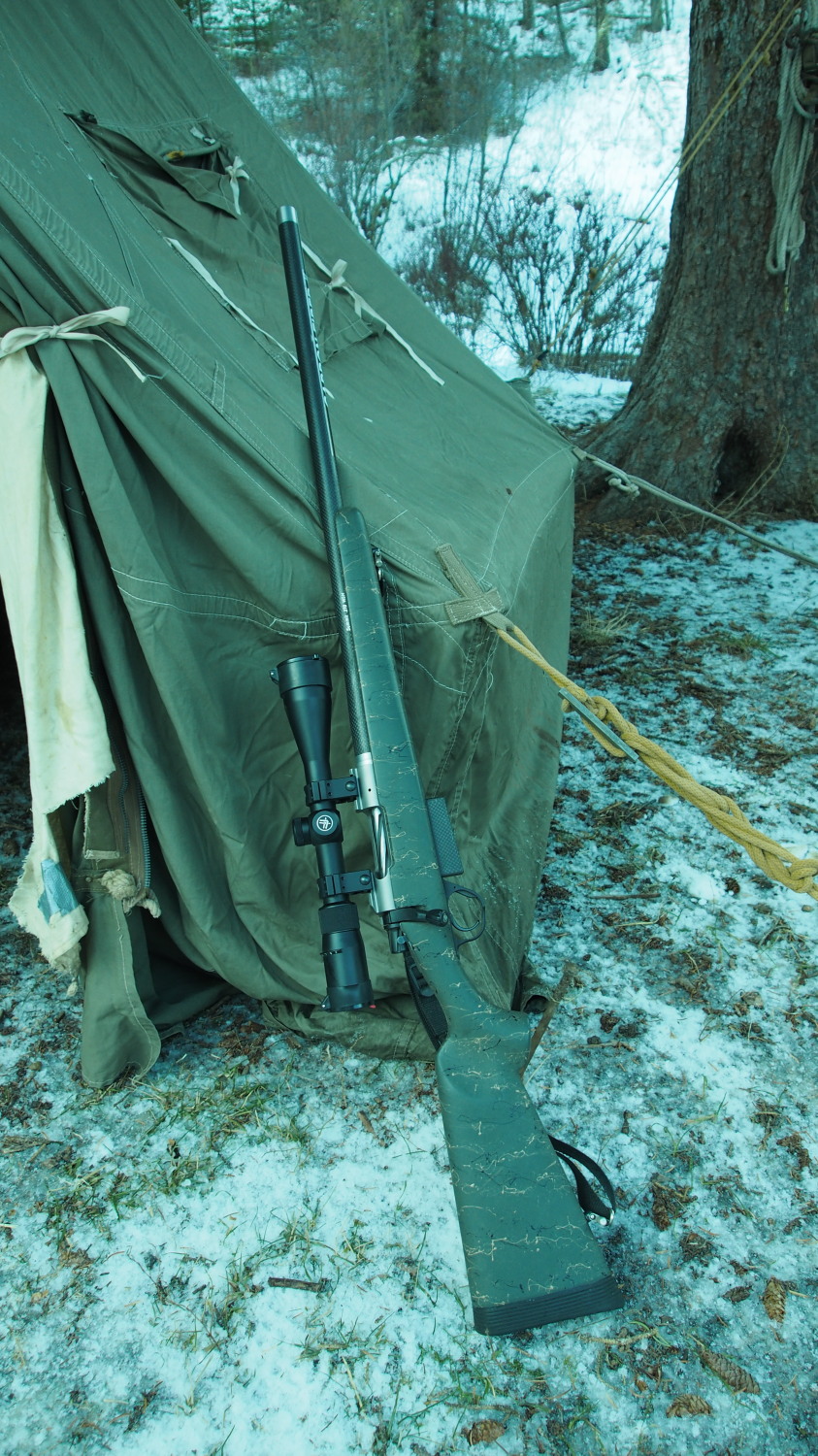
Based on my personal experience, many hunters can benefit from learning to use hash marks, and will probably add several hundred yards to their effective range over scopes without hash marks. Because these scopes tend to run in the 12-18 ounce range, you should be able to carry fully set up rifles in the seven to eight pound range— about perfect for the backcountry mule deer hunter.
On a sidenote, these type of scopes must be at max power for hash marks to be accurate. You have to remember this when shooting beyond the yardage of your center crosshair, which will be about 200-250 yards depending on your caliber. For me, this was not a problem as I always go to max power when shooting beyond 200 yards anyway, but make sure you practice enough to burn this task into your brain.
You can use Vortex’s Long Range Ballistics Calculator to see if hash marks are a good choice for your caliber, load, and rifle (video tutorial here).
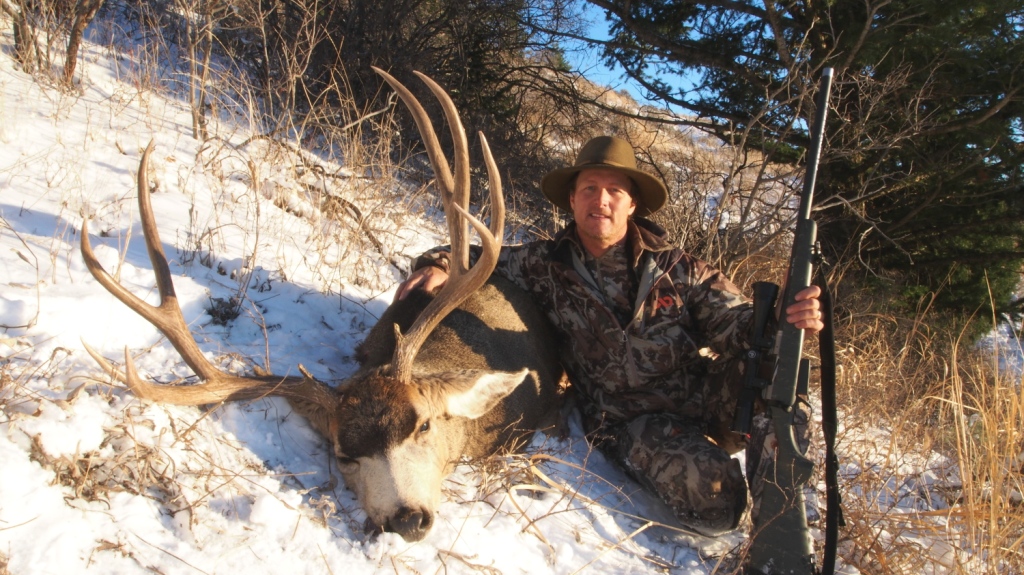
I killed this Idaho buck with a Vortex Viper 3-9×40 featuring the BDC reticle and a Christensen Arms Carbon Summit Rifle at 460 yards with only seconds to prepare for the shot. Had I been shooting turrets, I’m pretty sure this buck would have walked. You can see a video from that hunt here.
Sidebar: Two Good Scopes Featuring Hash Marks
Vortex Diamondback HP 3-12x42mm with Dead-Hold BDC Reticle
I tested and hunted with this scope during the 2015 season on top of an ultralight Christensen Arms Carbon Summit Rifle in 270 WSM rifle featuring Precision Reflex split picatinny lightweight rings. The scope offered a generous 4.0 inches of eye-relief and would be a good choice for a magnum without a muzzlebrake. It also feautured adjustable parallax from 30 yards to infinity but once I set it at 200 yards, I hardly touched it again. It features 1/4 MOA adjustment graduations.
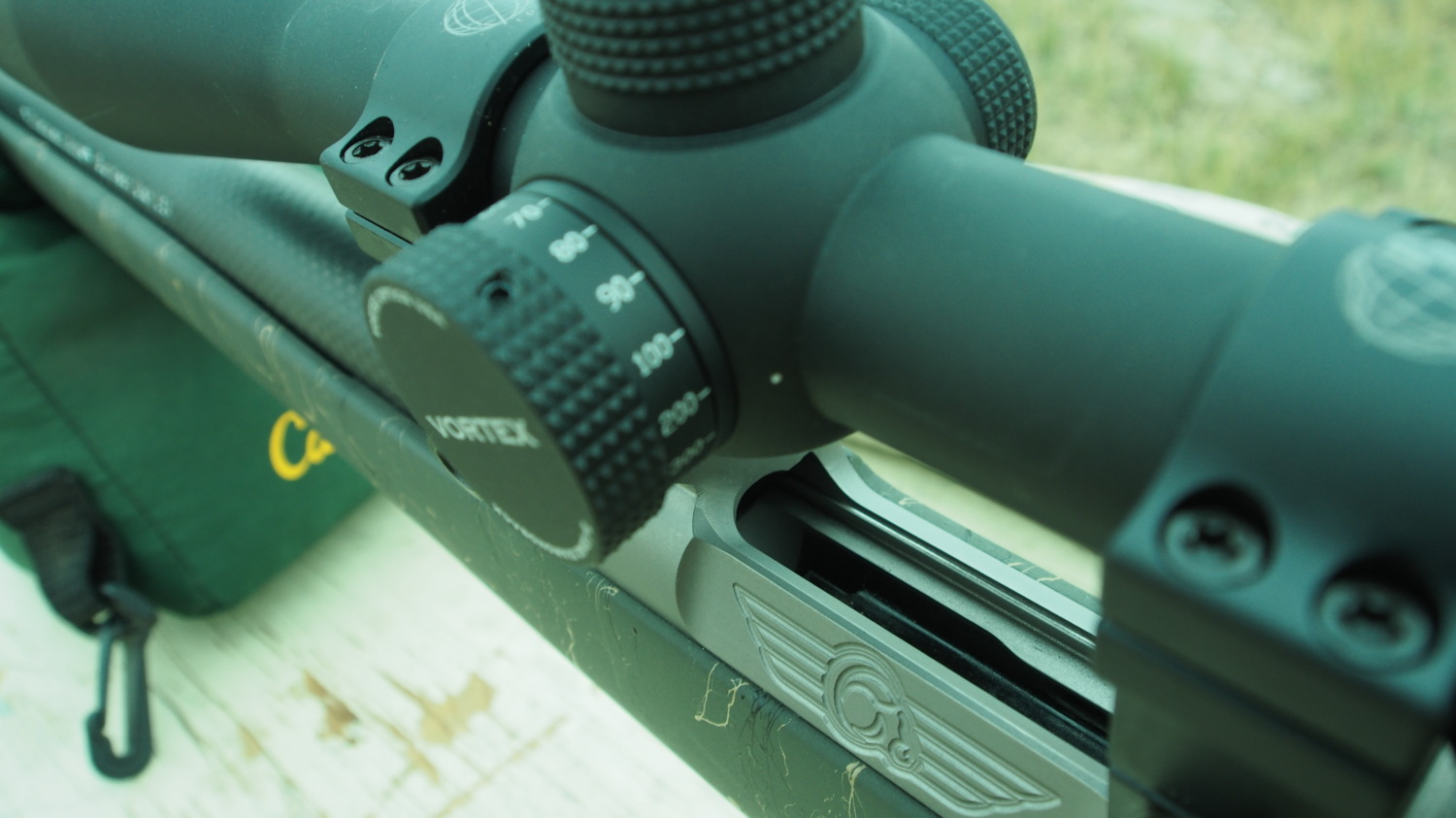
Brightness was good as was clarity, although I did find clarity waned at 10-12x. I tested the scope to nearly 700 yards and shot several sub-MOA groups. Although the scope weighed in at only at 18 ounces, I still felt like I was overscoped on the ultra-lightweight rifle (6lbs, 2 ounces naked.) I also had marginal clearance between the bolt and the eyepiece of the scope, so I swapped it for a lighter and smaller Vortex Viper rather than go for a taller mount.
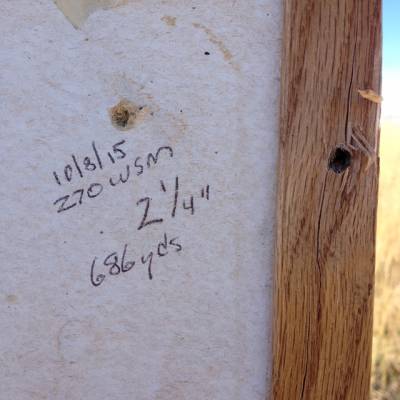
Vortex Viper 3-9x40mm with Dead-Hold BDC Reticle
After removing the Diamondback, I installed this little powerhouse. Weighing it at 14.2 ounces with an overall length of 12.4″, this scope was a better match for the ultra-lightweight gun and solved my bolt clearance issue. It has fixed parallax set to 100 yards and with a good cheek weld, I experienced no issues. Although this scope has 0.5″ less eye relief than it’s bigger cousin, I found it was sufficient even without a muzzlebrake with my 270 WSM. In a standard caliber, it would be even better matched to expected recoil.
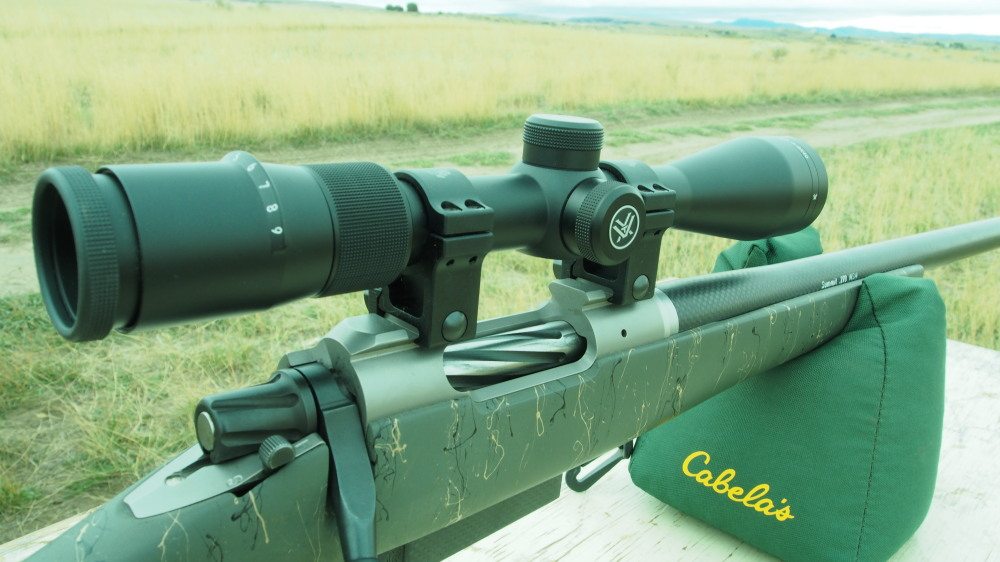
I also confirmed that for shooting under 700 yards, the 9x power, which remained clear, is still enough for good accuracy. I shot several MOA groups at nearly 700 yards proving the weight penalty of higher power isn’t a good trade off.
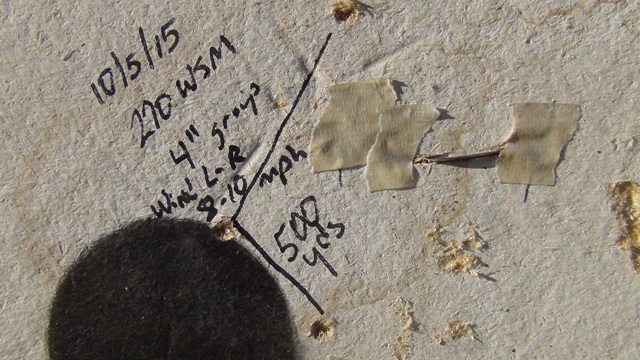
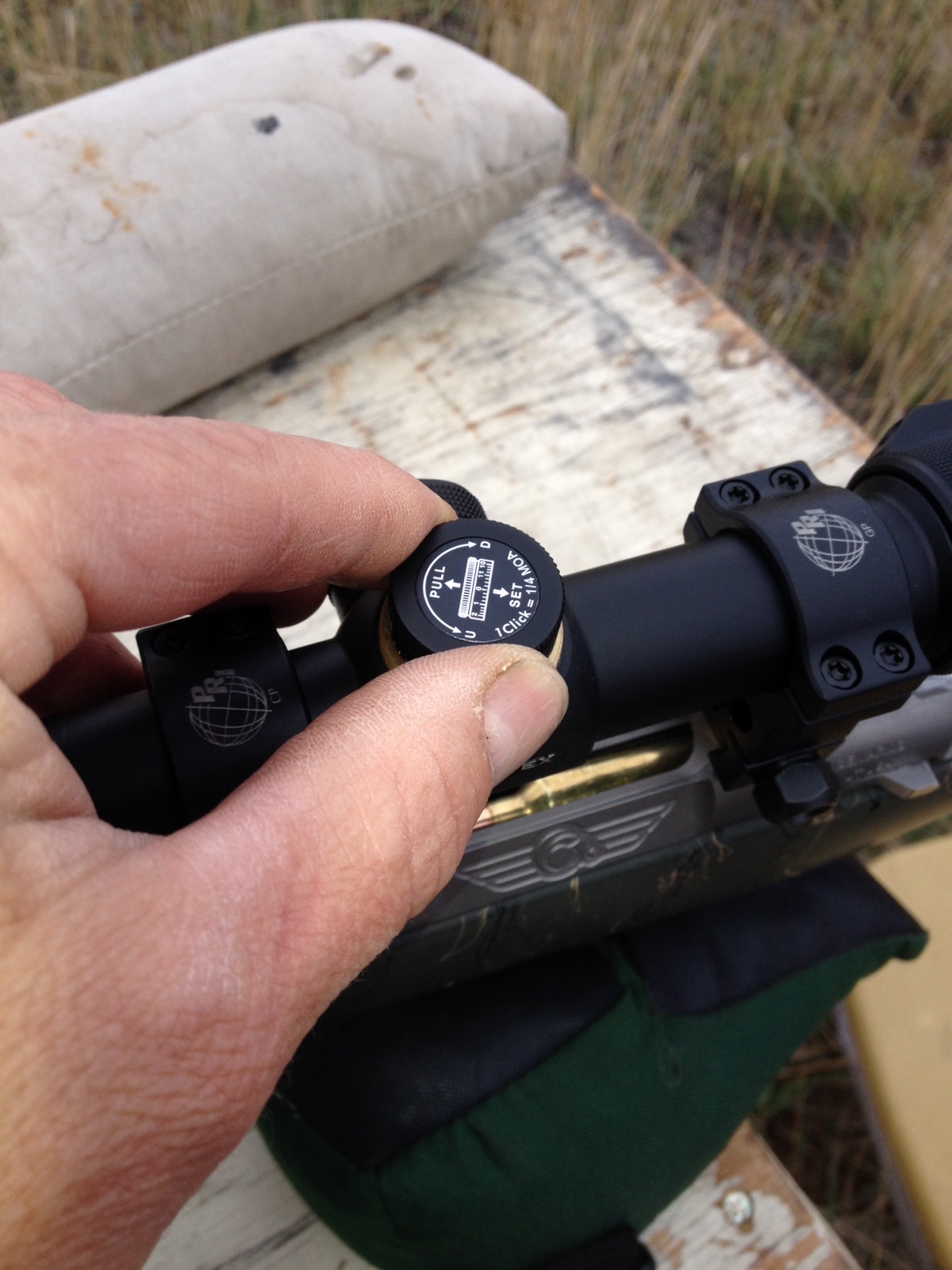
The Viper also sported hand-adjustable 1/4 MOA sight-in turrets. I found these preferrable over the Diamondback’s which required a coin or a screwdriver to operate
As of press time, you can find the Viper at around $300 at the BlackOvis store here. The Diamondback was out of stock, but I’ve seen them for under $400.
*To note, the point-of-impact relative to hash marks did not change between scopes attesting to the precision of these optics.
You can ask Robby questions or discuss this article here
You can also check out his book, Hunting Big Mule Deer: How to Take the Best Buck of Your Life here













